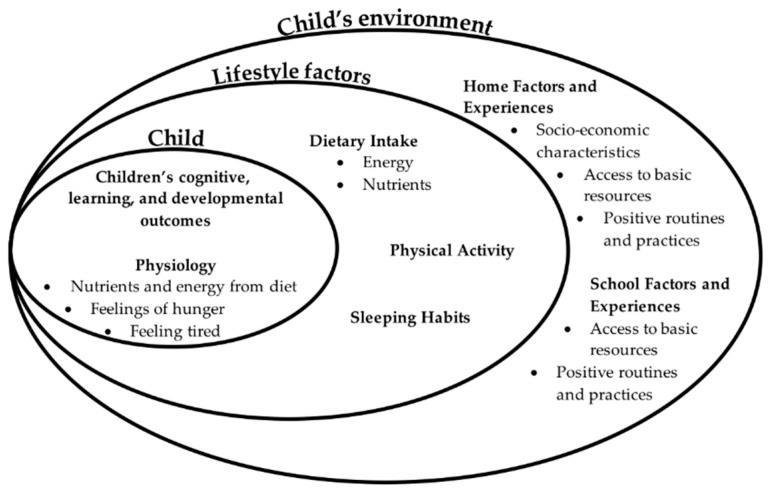Figure 1.
Contributors to children’s cognitive, learning, and other developmental outcomes are described in this ecological model. The inner-most circle represents the child’s own body, where physiological conditions, such as the nutrients and energy provided from meals and snacks, as well as the resulting feelings of hunger or tiredness, may directly influence the ability for cognitive processes. The lifestyle factors affecting the child’s physiology are dietary intake, physical activity, and sleeping habits. The outer-most circle represents the child’s larger environment, such as the home and the school. Socioeconomic factors have a substantial effect on access to basic resources, such as an area to play and be active, the noise level at bed time, and the familial established routines and practices. Likewise, the school’s resources, for instance playgrounds and green space, as well as routines and practices, affect the child’s lifestyle behaviors.

